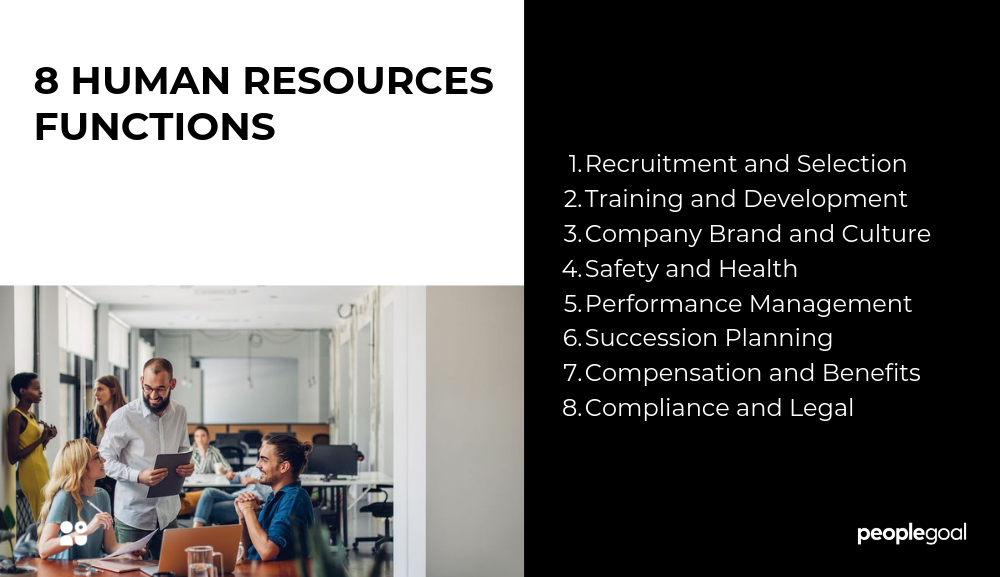Workflows are the ways people get a task done. These can often be illustrated as a series of steps that need to be completed sequentially in a diagram or a checklist. This helps individual’s breakdown and visualize the steps that need to be taken to get a task done. You can execute a workflow as an individual, or if a task includes other people, they can also be incorporated into the process.
This system can be hugely beneficial to Human Resources processes. As such, we have put together 5 custom workflow examples for Human Resources processes. Each workflow example starts by describing the overall goal of the process, summarizes what the workflow should achieve, and gives the context in which you can automate this process.
Hiring an Employee
There’s no right or wrong way to conduct your recruitment, so this workflow can constantly be adjusted. This example gives you an overarching view of what needs to be done for an employee to be successfully recruited. Once you have advertised your job, and had applications sent in, the second step in the hiring process is evaluating the CV. This will primarily be completed by the talent manager, however the CV’s that stand out will usually be presented to the individual who will be managing the new hire.
Once the CV’s have been evaluated and a certain number of them approved, the next stage will be to plan the interview. As you will most likely need more than one person’s opinion on hiring an individual, you will need to organize their calendars accordingly to find the best time to conduct the interview. Conducting interviews in bulk can work better as you can set aside a whole morning for interviews and complete them in slots. Once you find a time that works for both the interviewee and the interviewers, you will need to interview the potential hire. During this stage, it would be useful to take notes to refer to when you make your final hiring decision. Once you have conducted all interviews, you will need to decide which candidates are successful, and which will be rejected. Once this has been decided, you can draft up an offer of employment. This should include the following information: a job title, job description, reporting structure, salary, starting date, benefits eligibility and information and an acknowledgement of offer.
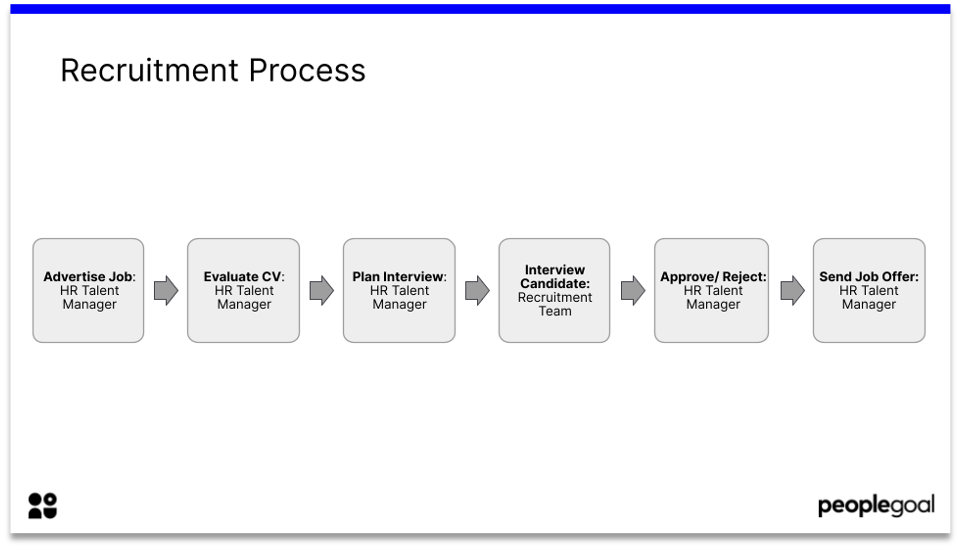
Approve Vacation Requests:
Approving a vacation request can also have a workflow. The purpose of using workflow software for this is to track the steps each individual took within the process.
The process starts with an employee submitting a vacation request. The employee’s manager will then be notified that the employee has submitted a vacation request and will have to analyze this to decide if the employee has enough day’s holiday left, and if the vacation time requested will affect the running of the business. If the vacation time requested is feasible, then the manager can approve the request, or deny the request if not. Regardless, the employee will receive a notification dependent on the outcome.
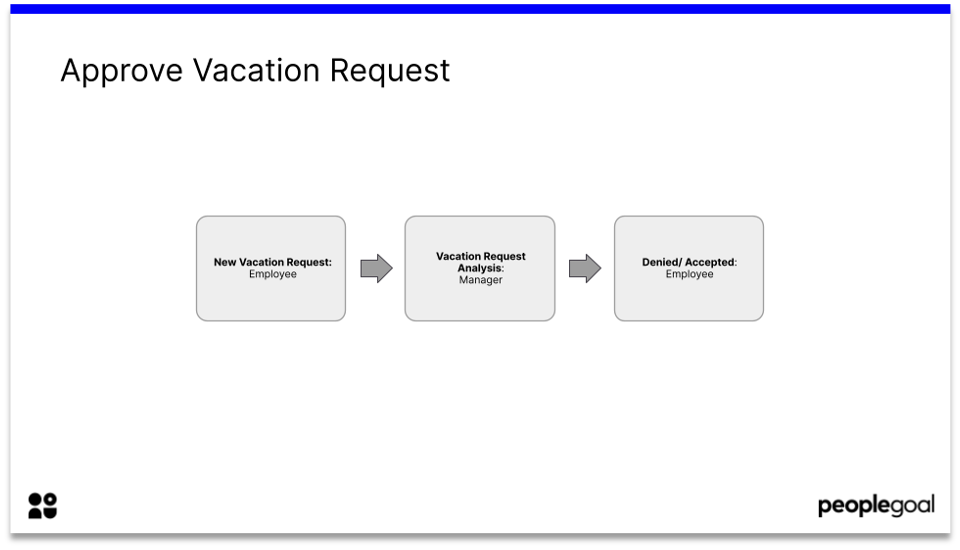
Onboarding
Onboarding is broken down into a series of phases, each of which includes a number of preparation tasks. The key milestones are signing a contract with a start date, the first day in the office and the end of an initial trial period. Prior to the onboarding, an employer should gather the future employee’s details necessary for employment. This ranges from National Insurance Numbers to Proof of Residency. The next step would be conducted by the hiring manager and incorporates pre-employment checks. This ranges from vetting a new hires social media, to a full Disclosure and Barring Service check (DBS).
The next step – new joiner activities – will incorporate the more social side of onboarding. This ranges from providing the assets necessary to do the job such as a laptop or car, to introducing the individual to the team they will be working with and finally, to taking them out for lunch to go through some icebreakers. The confirmation stage is necessary for the employee to confirm that they have everything they need to complete the tasks they have been assigned. The last stage, ‘post-employment review,’ is a key aspect of onboarding. The employer decides when this should be undertaken, but usually it happens at the end of one’s probation. This is essentially a check-in to ensure that the employee has everything they need to complete their work and is coping well with the work they are assigned. This opens up the conversation of what the next steps are to improve an employee’s performance.
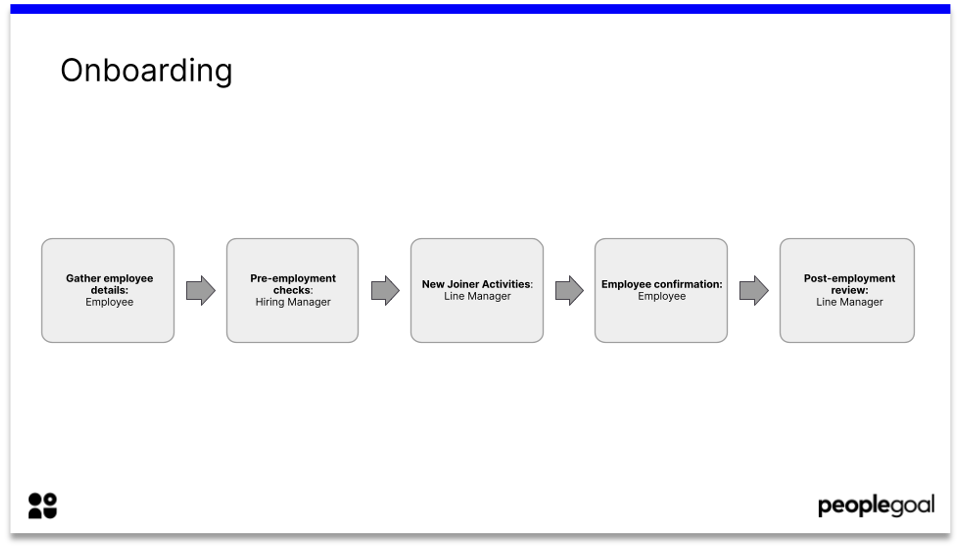
Reimbursement of Expenses
Reimbursing expenses is a vital HR component of many corporations. Therefore, it is key to have a process in place. To control and approve all of this is a complex procedure which involves several departments. Creating a workflow process for this makes everything happen faster in addition to assisting cost control and cost analysis which checks for deviations or procedures that can lower company expenditure.
This begins with an employee submitting a reimbursement request for an expense that they have incurred. Management will analyze this expense to judge whether or not the claim fulfils the necessary requirements. They will then approve or reject it. If approved, the necessary documentation will be sent to the individual(s) in charge of company finances who have the ability to reimburse an employee. Once the reimbursement has been paid, the employee will receive an email deposit receipt for future reference.
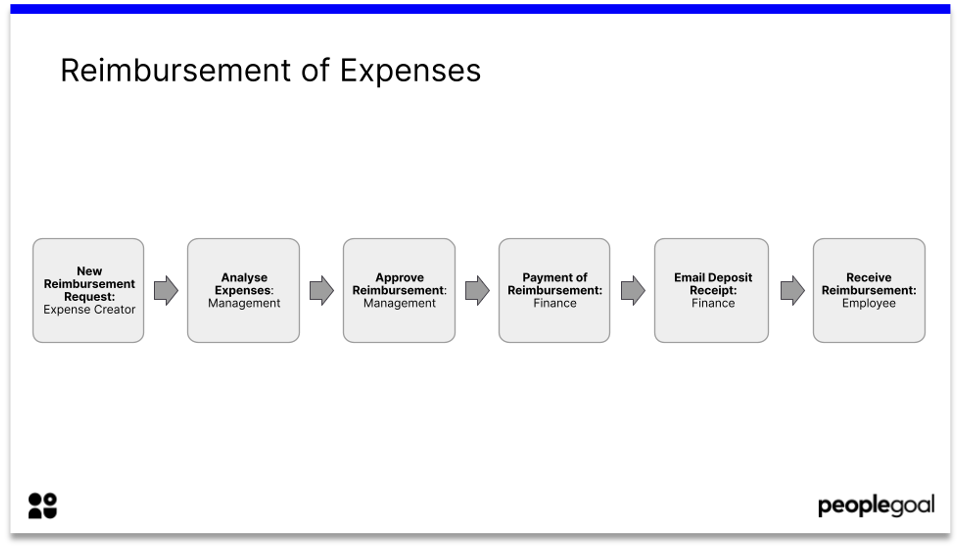
Employee Offboarding
A perfect resignation procedure is important for both employers and employees. As for the former, the staff are very important for company’s long-term development and profit earning. So, it’s crucial for employers to retain talented workers and maintain an excellent image throughout exit procedures. A good resignation process not only ensures that issues concerning resignation are dealt with effectively, but it can also obtain useful feedback from resigning employees. Here is an example workflow for employee off-boarding. This has been broken down into phases:
Phase 1: The basic information to be submitted by the employee that is leaving the company such as name, team, manager, date of resignation, and an attachment of their letter of resignation.
Manager input: A manager will need to acknowledge the change, and notify those who the change will affect, and start putting a plan into action for the handover. Furthermore, they will need to analyze which documents (if any) the employee will need to fill out and send over before they leave.
Phase 2: The employee will need to complete all the necessary documentation provided by management. This is dependent on each organizational requirements; however, it could include NDA’s, non-complete agreements, benefits documents, and asset documentation.
Document & Asset Recovery: This is an acknowledgement upon receiving the necessary documentation, and assets from the employee.
Phase 3: Knowledge transfer. This is the process of the employee transferring any knowledge that they may need to such as client introductions, research information, or project management details if they are part of a project that is yet to be complete.
Knowledge transfer Acknowledgement: The manager must acknowledge that all bases have been covered, and all necessary information has been passed over.
Final Stage: Hold a farewell gathering for the employee, perhaps buy them a departing gift, or just say ‘goodbye.’ It’s totally up to you!
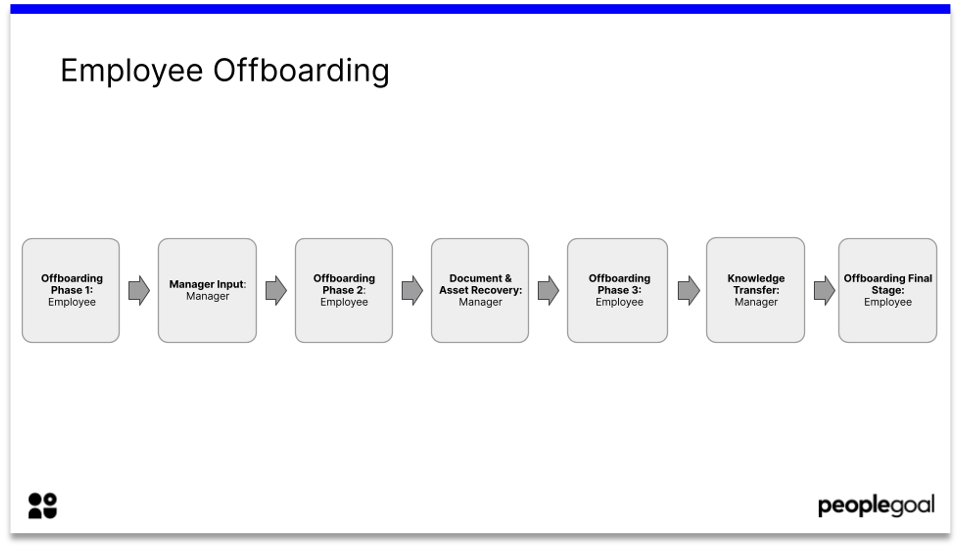
Ready to 3x Your Teams' Performance?
Use the best performance management software to align goals, track progress, and boost employee engagement.
